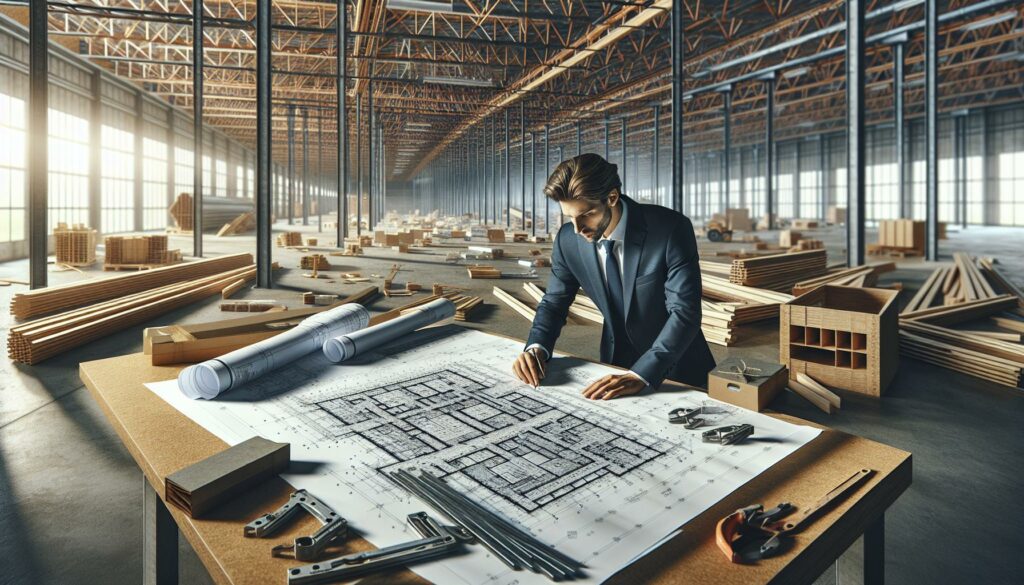As a professional contractor for over 15 years, I’ve learned that understanding floor mechanics is crucial for any successful construction project. Whether you’re building a new home or renovating an existing space the structural integrity of your floors can make or break the entire building’s stability.
I’ll guide you through the essential principles of floor mechanics including load distribution framing systems and material selection. These fundamentals don’t just affect the safety of your building – they also impact comfort durability and even energy efficiency. From basic joist systems to complex engineered solutions the world of floor mechanics offers fascinating insights into how our buildings stay strong and stable.
Key Takeaways
- Floor mechanics involves complex structural elements that distribute loads from the surface to the foundation through various pathways
- Different floor systems (beam and girder, joist, post and beam, concrete slab, engineered wood) have specific load capacities and span ranges suited for different applications
- Three fundamental load types affect floor structures: dead loads (permanent weight), live loads (movable weights), and point loads (concentrated forces)
- Common floor deflection issues stem from undersized joists, moisture damage, improper spacing, and overloading – prevention requires proper sizing, maintenance, and regular inspections
- Building codes establish mandatory standards for floor construction, including specific load ratings based on occupancy type and safety compliance measures
- Future trends in floor engineering include smart sensor systems, sustainable materials, advanced manufacturing technologies, and energy-efficient designs
Floor Mechanics
Floor mechanics operate through a complex interplay of structural elements that transfer loads from the surface to the foundation. I’ve observed how different floor systems distribute weight through specific pathways to maintain structural integrity.
Types of Floor Systems
Floor systems come in 5 primary configurations:
- Beam and Girder systems featuring main support beams spaced 8-12 feet apart
- Joist systems with parallel members placed at 16-inch intervals
- Post and Beam structures utilizing heavy timber elements
- Concrete slabs ranging from 4-8 inches in thickness
- Engineered wood systems incorporating I-joists TJIs laminated beams
| Floor System Type | Typical Span Range | Load Capacity |
|---|---|---|
| Beam and Girder | 12-24 feet | 40-60 psf |
| Joist System | 12-16 feet | 40-50 psf |
| Post and Beam | 16-32 feet | 50-70 psf |
| Concrete Slab | 8-20 feet | 100-150 psf |
| Engineered Wood | 16-24 feet | 40-55 psf |
Load-Bearing Principles
Load distribution follows 3 fundamental principles:
- Dead loads encompass permanent weight from structural elements materials fixtures
- Live loads account for movable weights like furniture occupants equipment
- Point loads concentrate force in specific areas requiring enhanced support
- Surface material (flooring)
- Subfloor sheathing
- Supporting joists beams
- Load-bearing walls
- Foundation elements
| Load Type | Typical Range | Design Factor |
|---|---|---|
| Dead Load | 10-20 psf | 1.2x |
| Live Load | 40-100 psf | 1.6x |
| Point Load | 300-2000 lbs | 2.0x |
Structural Components of Floor Systems
Floor systems consist of interconnected elements that work together to create a stable platform while transferring loads to the foundation. Each component serves a specific function in maintaining structural integrity.
Joists and Support Beams
Floor joists function as the primary load-bearing members, spanning between walls or beams at regular intervals of 16 or 24 inches. Support beams come in three main types:
- Solid wood beams measuring 6×10 to 8×12 inches for spans up to 20 feet
- Built-up beams combining multiple 2x lumber pieces for enhanced strength
- Engineered beams like LVL or steel I-beams for spans exceeding 25 feet
The sizing depends on five key factors:
- Span length between supports
- Spacing between joists
- Applied loads
- Species of lumber
- Environmental conditions
Subfloor and Underlayment
The subfloor provides a continuous structural surface attached directly to the joists. Common materials include:
- Plywood (5/8 to 3/4 inch thick)
- Oriented Strand Board (OSB) panels
- Tongue-and-groove boards
- Sound dampening materials like cork or rubber
- Moisture barriers for wet areas
- Leveling compounds for uneven surfaces
- Thermal insulation materials
| Component | Typical Thickness | Maximum Span |
|---|---|---|
| Floor Joists | 2×8 to 2×12 inches | 12-20 feet |
| Subfloor | 5/8 to 3/4 inch | 24 inches |
| Underlayment | 1/4 to 1/2 inch | N/A |
Common Floor Deflection Issues
Floor deflection occurs when structural elements bend or sag under applied loads, compromising the integrity of the floor system. Based on my extensive field experience, I’ve identified several distinct patterns of floor deflection that require immediate attention.
Causes of Floor Sagging
Structural movement stems from multiple interrelated factors affecting floor stability:
- Undersized joists create excessive bending under normal loads
- Moisture damage weakens wood members through rot decay fungus
- Termite infestations hollow out support beams creating structural voids
- Overloading exceeds design capacity from heavy furniture equipment
- Foundation settlement shifts the load-bearing points
- Improper joist spacing spans beyond recommended distances
- Missing support posts reduce load distribution capacity
- Cut notched joists compromise sectional strength
Prevention Methods
These targeted strategies help maintain floor system integrity:
- Install properly sized joists based on span tables specifications
- Maintain 18-inch crawl space clearance for moisture control
- Apply borate-based wood preservatives during construction
- Place support columns at maximum 8-foot intervals
- Use metal joist hangers rated for specific loading conditions
- Install solid blocking between joists at bearing points
- Monitor humidity levels keeping them below 60%
- Conduct annual inspections checking for deflection signs
| Component | Maximum Deflection | Time Period |
|---|---|---|
| Floor Joists | L/360 of span | Immediate |
| Main Beams | L/240 of span | Long-term |
| Living Areas | 1/2 inch | 10 years |
| Storage Areas | 3/4 inch | 10 years |
Floor Design Considerations
Floor design requires careful evaluation of multiple factors to create stable structural systems that meet performance requirements. I base these considerations on load-bearing capacity requirements structural codes.
Material Selection
Material choices impact floor performance through specific physical properties:
-
Dimensional Lumber
- Southern Yellow Pine: 1650 psi bending strength
- Douglas Fir: 1500 psi bending strength
- Hem-Fir: 1300 psi bending strength
-
Engineered Wood
- I-Joists: 24-inch depth capacity
- LVL Beams: 2900 psi bending strength
- Glulam: 2400 psi bending strength
-
Concrete Systems
- Regular Weight: 150 pcf density
- Lightweight: 115 pcf density
- High-Strength: 6000+ psi strength
| Material Type | Cost per sq ft | Lifespan (years) | Load Capacity (psf) |
|---|---|---|---|
| Dimensional | $2-4 | 30-40 | 40-50 |
| Engineered | $4-8 | 50-75 | 60-100 |
| Concrete | $5-10 | 75-100 | 150-200 |
Span Calculations
Span calculations determine maximum distances between supports:
-
Joist Sizing Formula
- Depth = Span/20 for living areas
- Width = Depth/6 for standard loads
- Spacing = 16 inches on center
- Floor joists: L/360
- Main beams: L/240
| Span Length (ft) | Joist Size | Maximum Load (psf) | Spacing (inches) |
|---|---|---|---|
| 12 | 2×8 | 40 | 16 |
| 16 | 2×10 | 40 | 16 |
| 20 | 2×12 | 40 | 16 |
Building Code Requirements
Building codes establish mandatory standards for floor construction to ensure structural integrity and occupant safety. These requirements vary by jurisdiction but follow standardized guidelines from organizations like the International Building Code (IBC) and ASCE 7.
Load Rating Standards
Floor systems require specific load ratings based on occupancy type and intended use. The International Building Code mandates these minimum uniformly distributed live loads:
| Occupancy Type | Required Live Load (psf) |
|---|---|
| Residential Living Areas | 40 |
| Office Spaces | 50 |
| Retail Areas | 75 |
| Storage Areas | 125 |
| Manufacturing Floors | 150 |
Key load rating requirements include:
- Maintaining a maximum deflection ratio of L/360 for floor joists with plaster ceilings
- Installing floor joists with sufficient bearing length (1.5 inches minimum on wood supports)
- Calculating point load capacities for concentrated forces from equipment or fixtures
- Meeting seismic design requirements in applicable zones
Safety Compliance
Building codes enforce specific safety measures for floor construction:
Structural Requirements:
- Installing firestops between floor levels every 10 feet horizontally
- Using approved fasteners rated for the specific load conditions
- Maintaining minimum joist depth-to-span ratios of 1:20
- Including solid blocking at bearing points and cantilevers
Material Standards:
- Using pressure-treated lumber for ground contact situations
- Installing vapor barriers with minimum 6-mil thickness
- Meeting flame spread ratings for floor finishes
- Applying appropriate strength-grade lumber based on span tables
- Verifying proper joist hangers and connection hardware
- Checking subfloor thickness and fastening patterns
- Confirming proper blocking and bridging installation
- Documenting load path continuity through the structure
Future Trends in Floor Engineering
Smart floor systems integrate sensors to monitor structural health in real-time, detecting stress patterns, moisture levels, and load distribution anomalies. These systems connect to building management platforms through IoT networks, enabling predictive maintenance and automated responses to potential issues.
Sustainable materials transform floor engineering through:
- Cross-laminated timber panels with 40% lower carbon footprint than concrete
- Bio-based composites incorporating recycled materials with 25-year durability
- Self-healing concrete containing bacteria that repair micro-cracks within 28 days
- Graphene-enhanced flooring with 200% increased strength-to-weight ratio
Advanced manufacturing technologies reshape floor production:
- 3D-printed floor components reducing installation time by 60%
- Robotic assembly systems achieving 95% precision in joint connections
- Modular floor units cutting construction waste by 35%
- Prefabricated systems decreasing installation costs by 40%
| Technology | Impact on Construction | Cost Reduction |
|---|---|---|
| Smart Sensors | 75% faster issue detection | 30% maintenance |
| 3D Printing | 60% reduced installation | 25% materials |
| Robotics | 95% improved accuracy | 35% labor |
| Modular Systems | 50% faster assembly | 40% overall |
Energy-efficient designs incorporate:
- Phase-change materials storing 40% more thermal energy
- Piezoelectric systems converting footsteps to power
- Radiant floor technologies reducing heating costs by 30%
- Vacuum-insulated panels achieving R-values of 50 per inch
Performance optimization tools enhance floor engineering through:
- Digital twin modeling with 99% accuracy in load predictions
- AI-powered design algorithms reducing material waste by 45%
- Augmented reality systems for precise installation guidance
- Real-time structural analysis software monitoring deflection patterns
These innovations link directly to improved structural integrity while maintaining the core principles of load distribution covered earlier in this article.
Load Distribution Principles
I’ve shared my extensive knowledge of floor mechanics to help you understand this critical aspect of construction. From load distribution principles to cutting-edge smart floor systems the fundamentals remain essential for any successful building project.
My experience has taught me that proper floor design is more than following codes and calculations – it’s about creating safe reliable structures that stand the test of time. Whether you’re a professional contractor or a DIY enthusiast understanding these concepts will help you make informed decisions.
Remember that floor mechanics continues to evolve with new technologies and materials. But by mastering these core principles you’ll be well-equipped to tackle any flooring challenge while ensuring structural integrity and safety for years to come.

